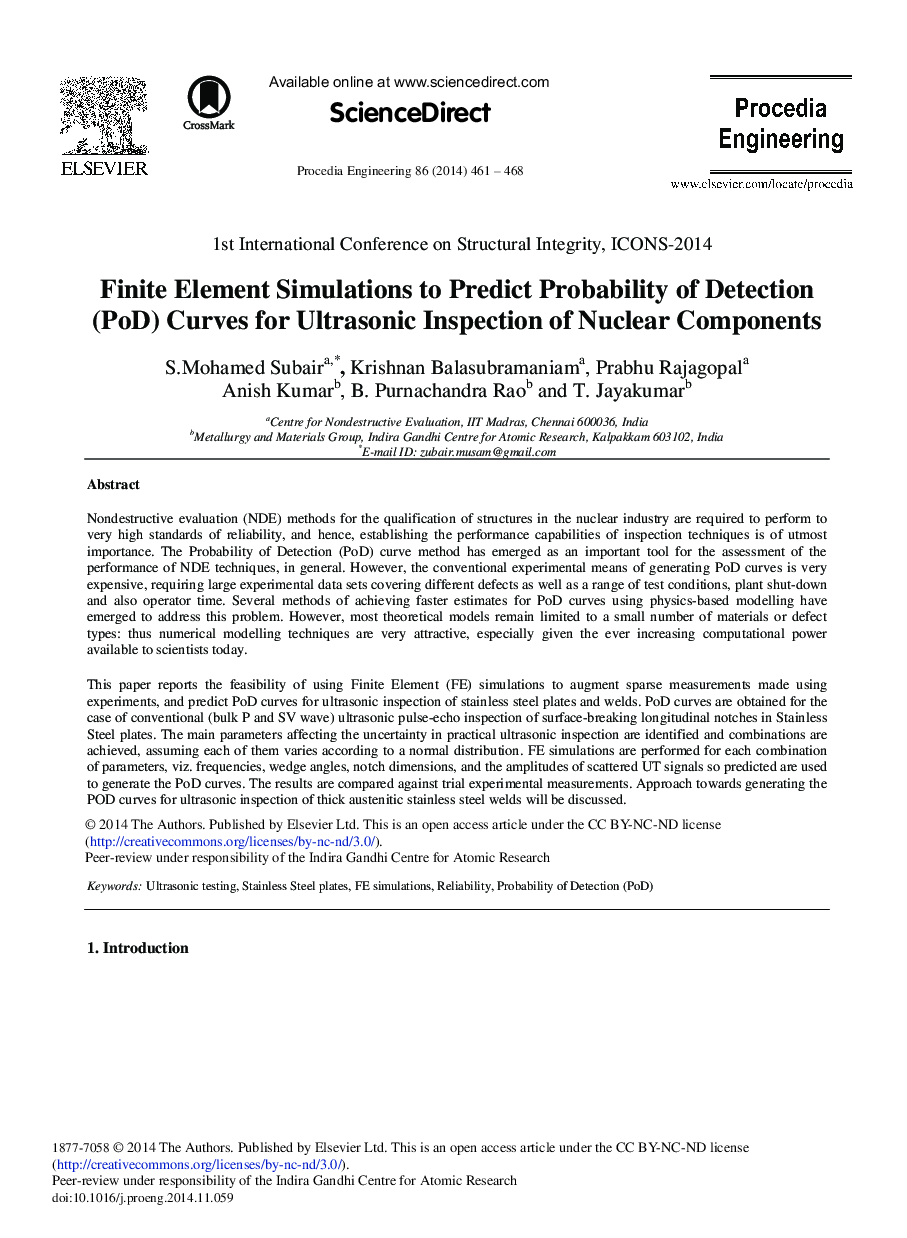| Article ID | Journal | Published Year | Pages | File Type |
|---|---|---|---|---|
| 857766 | Procedia Engineering | 2014 | 8 Pages |
Nondestructive evaluation (NDE) methods for the qualification of structures in the nuclear industry are required to perform to very high standards of reliability, and hence, establishing the performance capabilities of inspection techniques is of utmost importance. The Probability of Detection (PoD) curve method has emerged as an important tool for the assessment of the performance of NDE techniques, in general. However, the conventional experimental means of generating PoD curves is very expensive, requiring large experimental data sets covering different defects as well as a range of test conditions, plant shut-down and also operator time. Several methods of achieving faster estimates for PoD curves using physics-based modelling have emerged to address this problem. However, most theoretical models remain limited to a small number of materials or defect types: thus numerical modelling techniques are very attractive, especially given the ever increasing computational power available to scientists today.This paper reports the feasibility of using Finite Element (FE) simulations to augment sparse measurements made using experiments, and predict PoD curves for ultrasonic inspection of stainless steel plates and welds. PoD curves are obtained for the case of conventional (bulk P and SV wave) ultrasonic pulse-echo inspection of surface-breaking longitudinal notches in Stainless Steel plates. The main parameters affecting the uncertainty in practical ultrasonic inspection are identified and combinations are achieved, assuming each of them varies according to a normal distribution. FE simulations are performed for each combination of parameters, viz. frequencies, wedge angles, notch dimensions, and the amplitudes of scattered UT signals so predicted are used to generate the PoD curves. The results are compared against trial experimental measurements. Approach towards generating the POD curves for ultrasonic inspection of thick austenitic stainless steel welds will be discussed.
